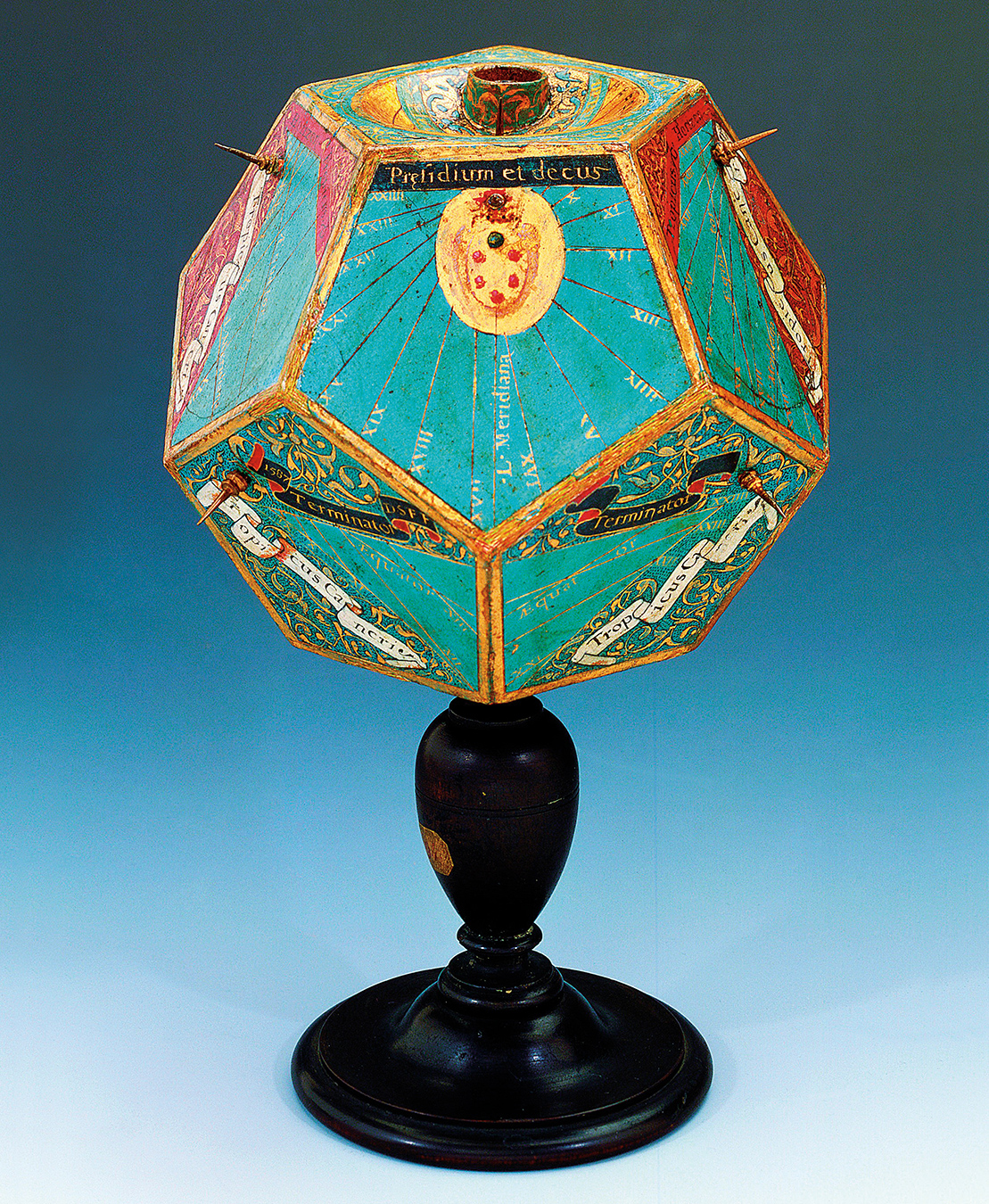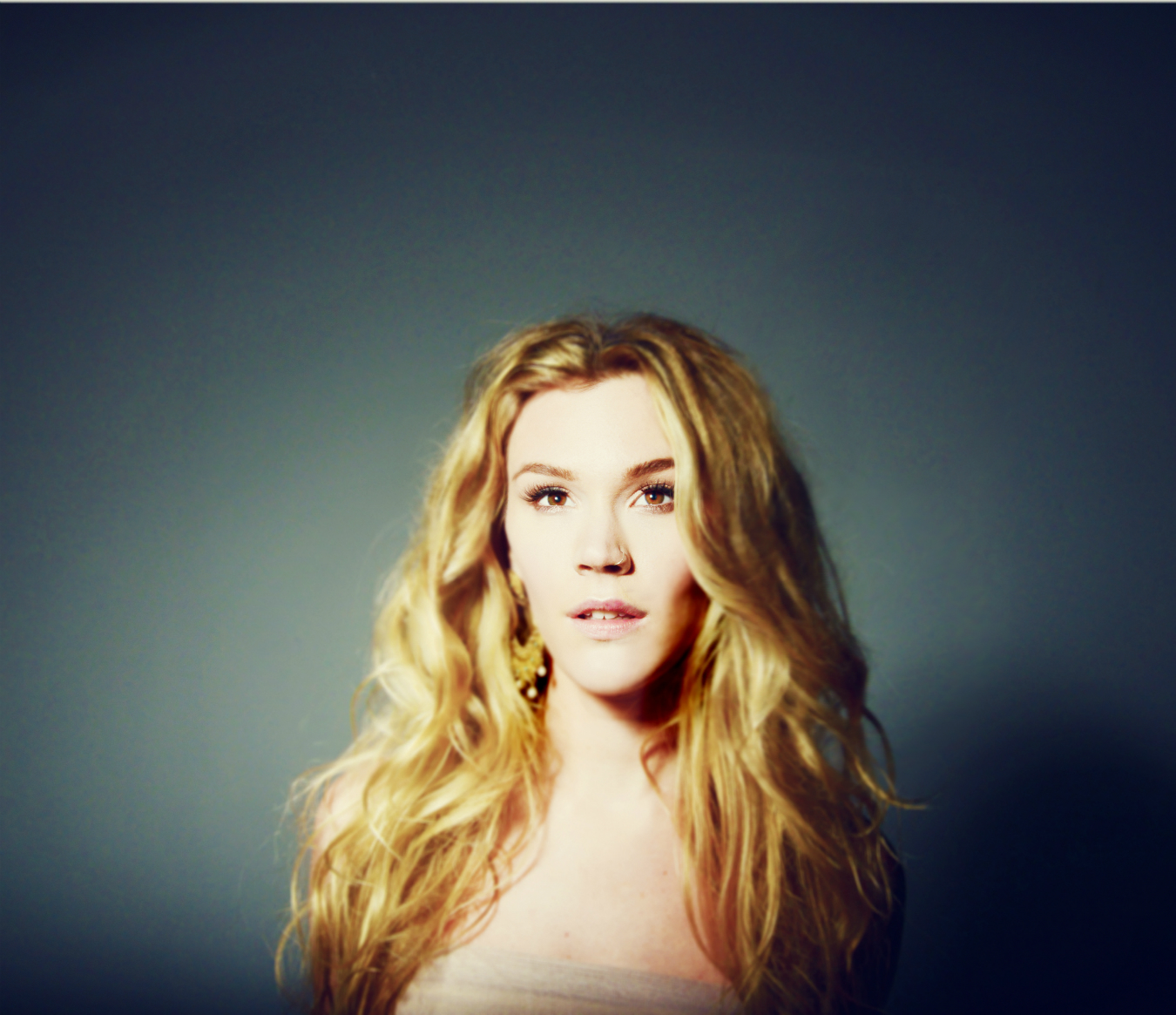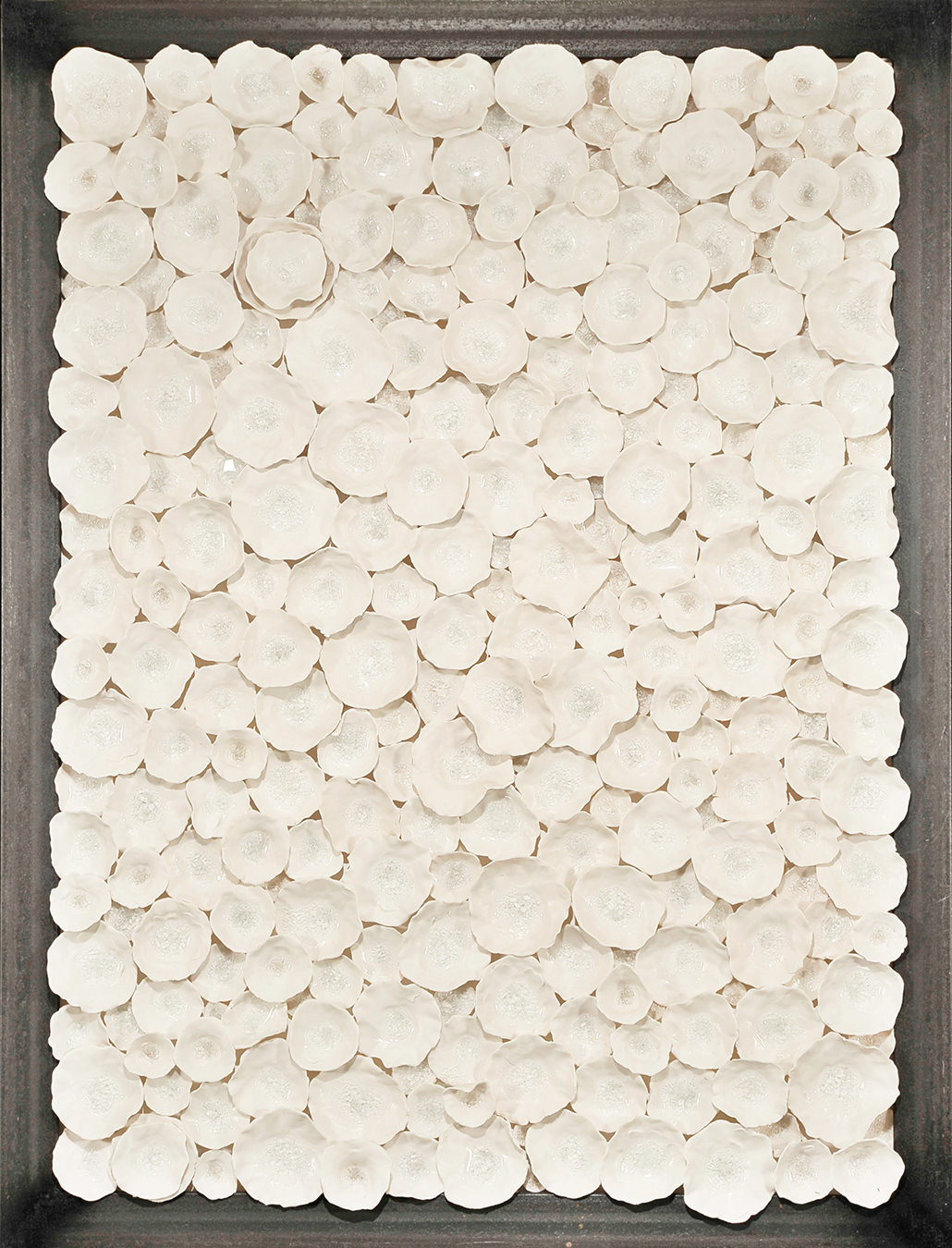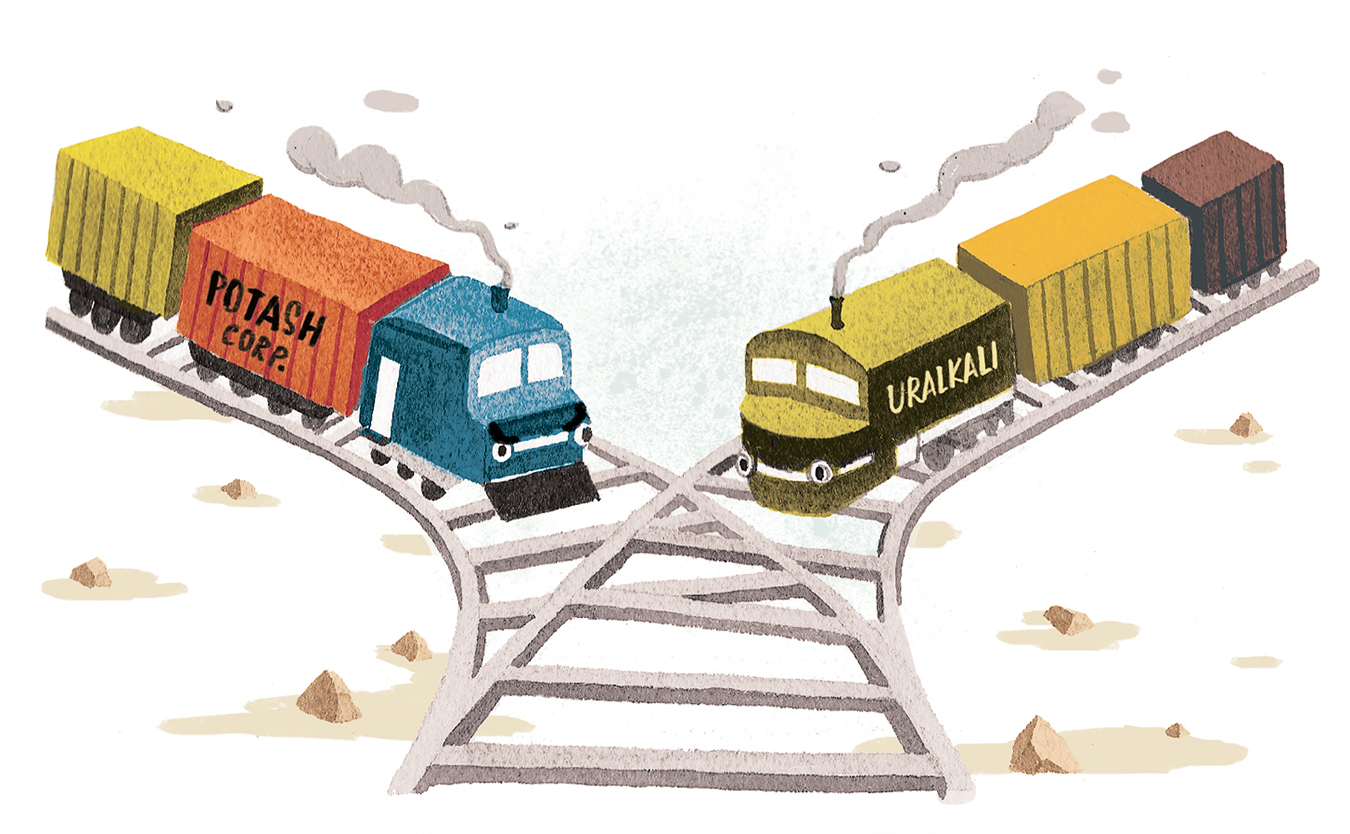The Art of the Deal
Investment opportunities in the world of fine art.
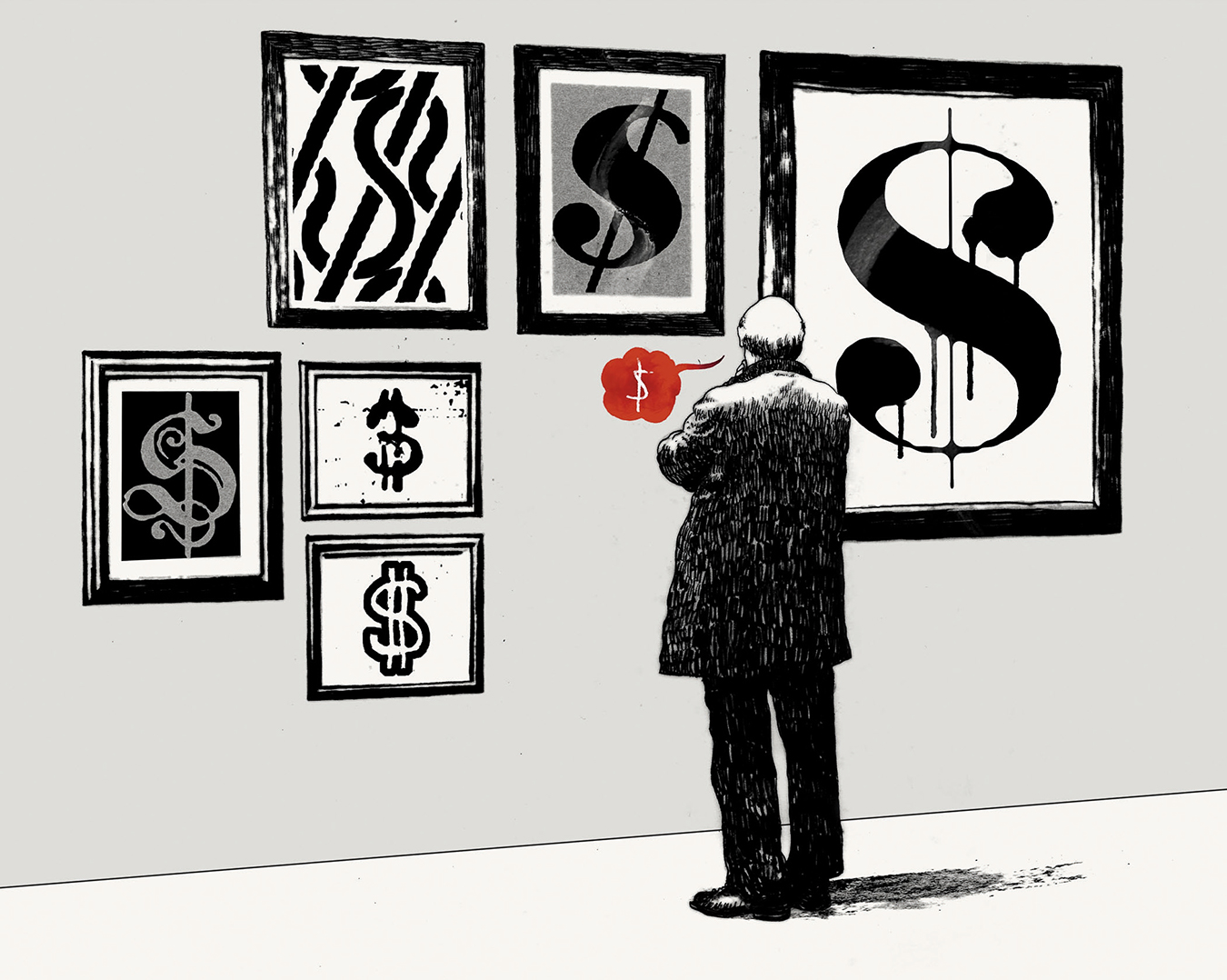
He is an imposing figure, this walking man: fully six feet tall, naked, his stick-thin limbs disproportionately long, his metallic skin clearly showing the rough handiwork of his creator. Yet, there is something undeniably noble about him too. He leans forward, driven by an unknown purpose, his gaze fixed straight ahead with confidence and determination. Clearly, a statement is being made—but what, exactly?
Whatever comes to mind when you look upon Alberto Giacometti’s 1961 L’Homme qui marche I, chances are it’s not your investment portfolio. Your loss. Auctioned off in February of this year to an anonymous bidder for £65-million (just over $100-million Canadian at current exchange rates), Giacometti’s masterwork has the distinction of being the most expensive piece of bronze on the planet.
Needless to say, the price came as a bit of a surprise to auction watchers. Since the global economy went into a deep freeze back in the fall of 2008, the market for fine art has suffered a distinct chill, with many buyers preferring to stay on the sidelines and sellers often disappointed with the prices generated. In this light, the sale of L’Homme qui marche I may be the best sign yet that the long, cold winter brought on by the Great Recession has given way to spring.
Perhaps it is not so surprising; after all, art has long been considered a store of wealth. Since the time of the pharaohs, the wealthy have commissioned and collected paintings, sculpture, and other cultural artifacts as part of their ongoing efforts to both immortalize their names and diversify their wealth. While the primary use of such objets is personal enjoyment, it’s undeniable that many have become excellent investments in their own right.
While it’s difficult to generalize about the art market as a whole—when every work is de facto unique, any discussion about averages is problematic—what data there are suggest that fine art can offer returns equal or superior to anything you might find in the stock market. As of December 2009, the 10-year compound annual return for the Mei Moses All Art Index was 5.5 per cent (www.artasanasset.com). While that number probably isn’t big enough to create a full-on stampede at the local gallery, when compared to a return of -1.3 per cent for the S&P 500 index over the same period, it’s sure to arouse some curiosity.
Then again, as many a starving artist will tell you, making money in art isn’t easy. The market for fine art is notoriously illiquid—it’s hard to sell a Picasso overnight—and largely unregulated. Auction fees and commissions remain high, 20 per cent or more in some cases. For those with only a passing appreciation of oil and canvas, separating the up-and-coming artist from the also-rans can be tricky.
And then there is the problem of valuation. Unlike stocks or bonds, which have value that can be quantified and objectively measured, the value of artistic work is by nature subjective. Or to put it more poignantly: one man’s work of art is another man’s urinal.
All that said, art’s low correlation to traditional assets has made it an intriguing investment possibility, particularly for high-net-worth individuals. Perhaps most importantly, while it’s entirely possible to overpay for a Van Gogh, for example, it will always be worth something—you can’t always say the same of stocks or bonds. These factors are leading some investors to wonder whether in a world where investing in stocks, bonds, or real estate seems more and more like a crap shoot, the best investment of all is the one you hang above your sofa.
Painting the Financial Picture
One person who has made a living by investing in art—both with his own collection and by facilitating the investment of others—is David Heffel. As the president and co-owner of the family’s eponymous galleries in Vancouver, Toronto, and Montreal, Heffel and his brother Robert are at the helm of one of the country’s premiere fine-art auction houses. As specialists in 20th-century and post-war Canadian art, the Heffels are in a unique position to understand the impact of the Great Recession on their business.
Has the art market cooled down? “Not in Canada,” Heffel answers emphatically. “And not with Canadian art.” While auctions in New York, London, and Asia have suffered from lukewarm participation and tentative bidding throughout the past 24 months, Heffel and other Canadian auctioneers have reported solid results. “We’ve been lucky in Canada,” he says. “Looking at the Canadian art market with outside eyes—and looking at the appreciation of the Canadian dollar—our art market would probably look unbelievably strong over the past couple of years.”
At first blush, that sounds counterintuitive: unlike food, clothing, and the monthly mortgage payment, a painting is a purchase easily deferred during tough times. But as Heffel explains, collectors and investors are less sensitive about the economic picture than they are about the quality of the work on offer. “In [this] business, it’s all about the great painting,” he says. “Great paintings always command great prices in auction. Often it is a collector’s once-in-a-lifetime opportunity to own a masterpiece.”
Not surprisingly, Heffel is bullish on Canadian art. “The Canadian art market will continue to be solid as long as great works keep coming into the market,” he says. But at the same time, Canadian art doesn’t command the same prices as that of other nations. “I think it’s still a bit of a bargain. Our record sale is just around $3.5-million for a Canadian painting at auction. When you compare that to the top-selling Russian or American artists, British painters, we have a long way to go.”
Can you make money buying and holding Canadian art? Absolutely, says Heffel. As an example, he cites the case of Theodosia Dawes Bond Thornton, a Montreal-born collector who passed away in October of last year at the age of 93. An avid collector of the Group of Seven and their contemporaries, including Lawren Harris, A.Y. Jackson, and others, Mrs. Thornton was a passionate patron of the arts.
And an exceptionally savvy investor. Mrs. Thornton purchased many of her canvases directly from the artists, often for ridiculously low prices (for example, Lake Superior Sketch XXXIII, which was purchased for $85 and now has an estimated present value of between $200,000 and $300,000). Mrs. Thornton’s meticulous records show the collection of 36 works was purchased for less than $15,000. Heffel estimates it will fetch in excess of $5-million when offered at auction this year.
Starting A Collection; Building A Portfolio
For those willing to follow Mrs. Thornton’s example, Heffel offers some sensible advice. “Buy what you like,” he says. “I think if you follow your heart and your passion, [money] is a residual benefit.”
At the same time, Heffel cautions that it takes time to develop an eye for art, much less a talent for investing. “You can get lucky,” he says, “but the collectors who have done the best—it’s not an overnight development.” Doing your homework, visiting galleries, understanding what’s sold, and for how much, and when—it’s all part of the ongoing education of an art investor. “Often it [starts] in childhood. Being exposed at an early age to museums and fine art, and carrying those experiences forward into later years.”
Unlike the stock market, where scouring through the bargain bin for the unloved or the overlooked is a well-respected strategy, with art it’s often a good idea to stick to well-recognized works from acclaimed artists, even if those works seem fully valued. “Quality is paramount over the dollar paid,” Heffel says. “Works that sell one day for record prices often turn out to be the best purchases ever made by a collector.”
Whatever you’re in the market for, Heffel believes your first step toward finding it is discussion. “I would solicit advice from a broad audience of people,” he says. “Talk to a number of consultants. But also talk to museum people, curators, people who aren’t involved in the commerce end of the visual arts. They can help you a lot in terms of developing your tastes, informing [you of] which artists you should be looking at, and giving you an indication of where things might be going.”
Above all, Heffel reminds individuals that whether you buy it for business or for pleasure, art is more than a means to an end. “For the true collector, [collecting] is a lifelong voyage,” he says. “If you’re going to travel the world, you don’t just end up in the Grand Canal in Venice or the Taj Mahal. There are valleys and highways that aren’t as glamorous on your route there. Collecting is just like that. You’re going to see a lot of paintings that aren’t that exciting, but every once in a while you see something, and if you’re lucky, you have the opportunity to buy, and you’ll get enjoyment for the rest of your life.”
Call it the best return on investment one could hope for.





